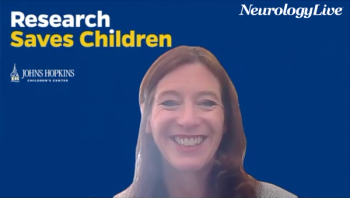
Caution: Downward Dog Ahead
What's your diagnosis for a 45-year-old woman who experienced strange symptoms after taking an advanced yoga class?
CHALLENGING CASE
A 45-year old woman presented to the emergency department with a headache, neck pain, drooping eyelid, constricted pupil, and failure to sweat over her forehead. The symptoms began one day ago, after she did plow pose in an advanced yoga class. She is otherwise healthy and fit, and says she does yoga to relieve frequent neck tension that results from her desk job. She describes the current neck pain as piercing and localized to the left side, which is different from her past neck pain. She describes the latter as a dull, tight pain that occurred on both sides of her neck.
She recently read a news story about a woman who had a stroke while doing yoga, and she is worried that the same thing may have happened to her. She has no past medical history and is not currently on any medications.
Examination
Neurological examination is notable for left-sided ptosis, miosis, and enophthalmos.
Workup
Chest X-ray and ultrasound of left common and internal carotid arteries are normal. Magnetic resonance angiogram (MRA) reveals extracranial internal carotid artery dissection. Transcranial ultrasound is negative for microemboli to the cerebral circulation.
Diagnosis
Horner syndrome.
Management
Symptoms are managed conservatively with aspirin for anticoagulation. On repeat MRA six months later, the internal carotid artery appears normal, suggesting complete resolution of the dissection. However, the Horner syndrome (HS) in this patient remains. Further examination and studies rule out connective tissue disease and other issues that could have caused her condition.
Discussion
Symptoms of HS include ipsilateral miosis, anhidrosis, enophthalmos (retracted eye), and
Neck trauma, in particular, can cause
Risk for spontaneous internal carotid artery dissection can be increased by recent neck trauma, infection, family history, smoking, high blood pressure, migraines, and underlying conditions like Ehlers-Danlos syndrome, fibromuscular dysplasia, Marfan’s syndrome, autosomal dominant polycystic kidney disease, and osteogenesis imperfecta. Treatment is generally conservative with anticoagulants and surgery if the condition recurs.
Cases of spontaneous internal carotid artery dissection have been rarely associated with hyper extension of the neck and rigorous neck movements, such as those that can occur during yoga.
A well-publicized
Yoga poses that may place undue pressure on the neck include shoulder stands, headstands, side angle pose, triangle pose, and plow pose. Over 90 Yoga poses that may be problematic can be found at the
Spontaneous internal carotid and vertebral artery dissection have also been linked to chiropractic manipulation, strong coughs or sneezes, painting a ceiling, and getting one’s hair washed in a beauty salon sink (“beauty-parlor stroke”).
Most internal carotid or vertebral artery spontaneous dissections heal on their own. About 75% of patients have a good functional recovery, and the death rate is less than 5%. Risk of recurrence is about 2% in the first month after the dissection. After that, the risk decreases but may remain elevated for at least a decade.
References:
1. Perez DJ. Spontaneous carotid artery dissection. JAAPA. 2017;30:27-29.
2. Schievink WI. Spontaneous dissection of the carotid and vertebral arteries. N Engl J Med. 2001;344:898-906.
3. Fong KY, Cheung RT, Yu YL, Lai CW, Chang CM, et al. Basilar artery occlusion following yoga exercise: a case report. Clin Exp Neurol. 1993;30:104-109.
Newsletter
Keep your finger on the pulse of neurology—subscribe to NeurologyLive for expert interviews, new data, and breakthrough treatment updates.









































